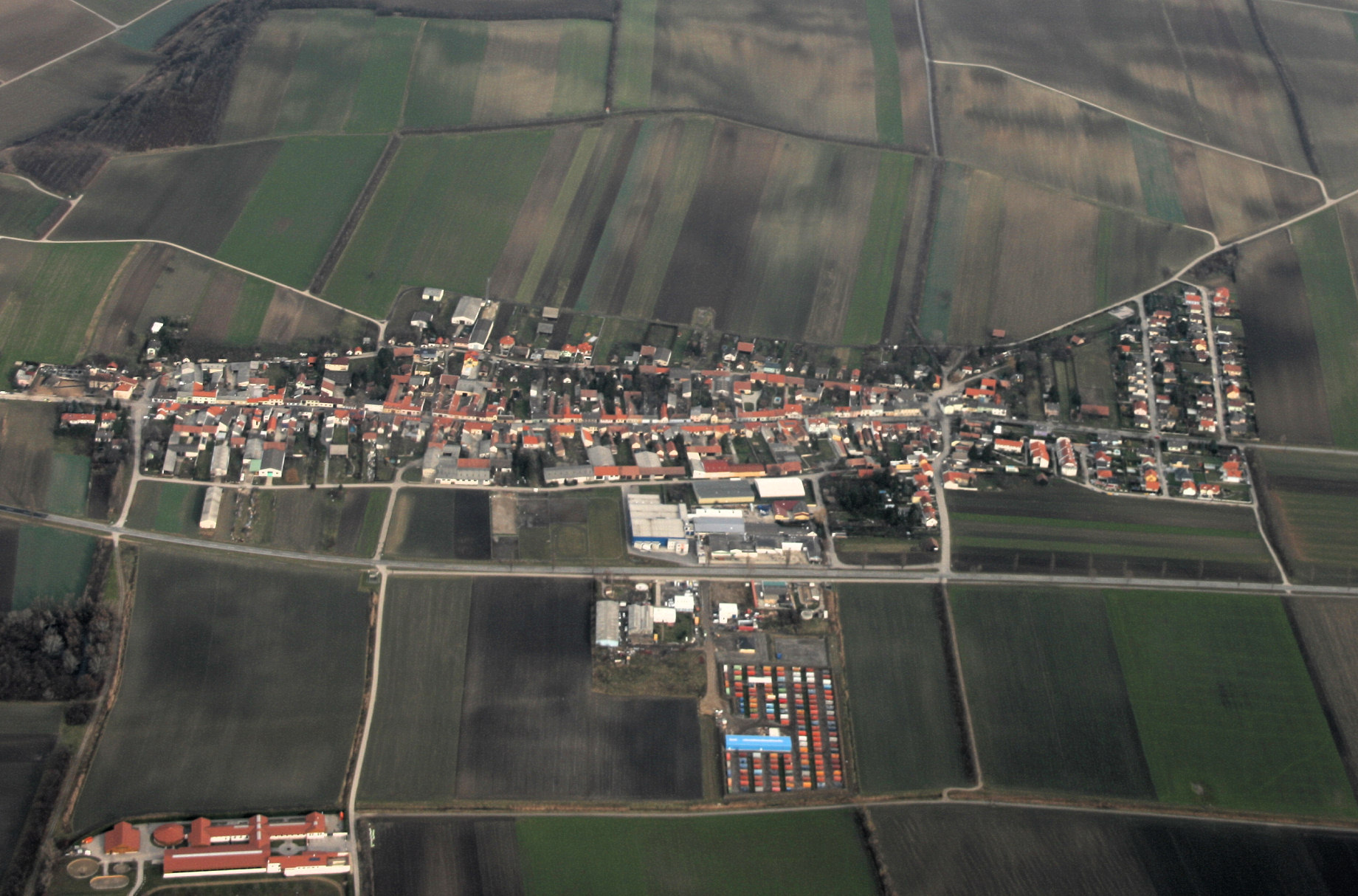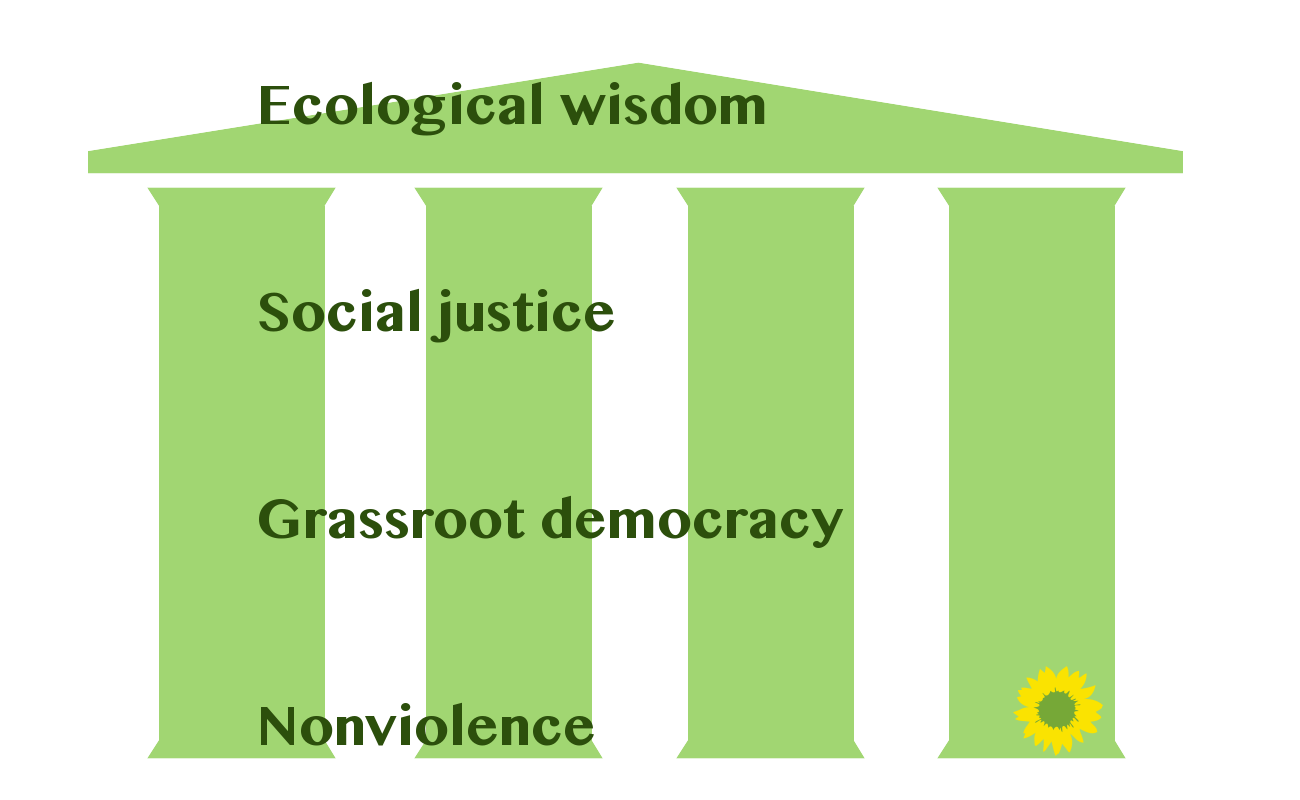|
2018 Lower Austrian State Election
The 2018 Lower Austrian state election was held on 28 January 2018 to elect the members of the Landtag of Lower Austria. The ruling Austrian People's Party (ÖVP) fell just short of an absolute majority of votes, but retained its majority in the Landtag. Nonetheless, this was its worst result in the state since 1998. The Social Democratic Party of Austria (SPÖ) and Freedom Party of Austria (FPÖ) made gains, with the latter doubling its share of seats. The Greens took minor losses, while NEOS – The New Austria (NEOS) contested its first state election in Lower Austria, debuting at 5.2%. Team Stronach, which had won 9.8% in the previous election, did not compete. Background The Lower Austrian constitution mandates that cabinet positions in the state government (state councillors, german: Landesräten) be allocated between parties proportionally in accordance with the share of votes won by each; this is known as Proporz. As such, the government is a perpetual coalition of all pa ... [...More Info...] [...Related Items...] OR: [Wikipedia] [Google] [Baidu] |
Landtag Of Lower Austria
The Landtag of Lower Austria is the state parliament of the Austrian state of Lower Austria. It exercises the state legislation (legislature). The seat of the Landtag is in St. Pölten in the Landhausviertel. The Lower Austrian Parliament is composed of 56 members of parliament. The term of office is five years. Elections are held in accordance with the Lower Austrian Landtag election regulations of 1992. 21 constituencies in Lower Austria correspond to the political districts. The statutory cities belong to the district of the same name or the surrounding district. The number of deputies corresponds to the number of inhabitants. To be eligible to stand as a candidate, a candidate must be 18 years of age (on election day) and have at least 50 declarations of consent. They are nominated by a political party. In order to enter the state parliament, one party must reach the four percent hurdle or obtain a mandate in a constituency. The most recent elections to the Landtag of Lower A ... [...More Info...] [...Related Items...] OR: [Wikipedia] [Google] [Baidu] |
D'Hondt Method
The D'Hondt method, also called the Jefferson method or the greatest divisors method, is a method for allocating seats in parliaments among federal states, or in party-list proportional representation systems. It belongs to the class of highest-averages methods. The method was first described in 1792 by future U.S. president Thomas Jefferson. It was re-invented independently in 1878 by Belgian mathematician Victor D'Hondt, which is the reason for its two different names. Motivation Proportional representation systems aim to allocate seats to parties approximately in proportion to the number of votes received. For example, if a party wins one-third of the votes then it should gain about one-third of the seats. In general, exact proportionality is not possible because these divisions produce fractional numbers of seats. As a result, several methods, of which the D'Hondt method is one, have been devised which ensure that the parties' seat allocations, which are of whole numb ... [...More Info...] [...Related Items...] OR: [Wikipedia] [Google] [Baidu] |
Gänserndorf District
Bezirk Gänserndorf () is a district of the state of Lower Austria in Austria. The Marchfeld lies in it. Municipalities Towns (''Städte'') are indicated in boldface; market towns (''Marktgemeinden'') in ''italics''; suburbs, hamlets and other subdivisions of a municipality are indicated in small characters. * Aderklaa * Andlersdorf *''Angern an der March'' **Angern an der March, Grub an der March, Mannersdorf an der March, Ollersdorf, Stillfried *''Auersthal'' *'' Bad Pirawarth'' **Bad Pirawarth, Kollnbrunn *Deutsch-Wagram *'' Drösing'' **Drösing, Waltersdorf an der March *'' Dürnkrut'' **Dürnkrut, Waidendorf *'' Ebenthal'' *''Eckartsau'' **Eckartsau, Kopfstetten, Pframa, Wagram an der Donau, Witzelsdorf *'' Engelhartstetten'' **Engelhartstetten, Groißenbrunn, Loimersdorf, Markthof, Schloßhof, Stopfenreuth * Gänserndorf * Glinzendorf *Groß-Enzersdorf **Franzensdorf, Groß-Enzersdorf, Matzneusiedl, Mühlleiten, Oberhausen, Probstdorf, Rutzendorf, Schönau an der Donau, Wit ... [...More Info...] [...Related Items...] OR: [Wikipedia] [Google] [Baidu] |
Bruck An Der Leitha District
Bezirk Bruck an der Leitha ( bar, label=Central Bavarian, Bruck aun da Leitha) is a district of the state of Lower Austria in Austria. Municipalities Towns () are indicated in boldface; market towns (''Marktgemeinden'') in ''italics''; suburbs, hamlets and other subdivisions of a municipality are indicated by lower dots. * Au am Leithaberge * Bad Deutsch-Altenburg * Berg * Bruck an der Leitha ** Bruck an der Leitha, Wilfleinsdorf, Schloss Prugg * Ebergassing ** Ebergassing, Wienerherberg * Enzersdorf an der Fischa ** Enzersdorf an der Fischa, Margarethen am Moos * Fischamend ** Fischamend-Dorf, Fischamend-Markt * Göttlesbrunn-Arbesthal ** Arbesthal, Göttlesbrunn * Götzendorf an der Leitha ** Götzendorf an der Leitha, Pischelsdorf * Gramatneusiedl * Hainburg an der Donau * Haslau-Maria Ellend ** Haslau an der Donau, Maria Ellend * Himberg ** Himberg, Velm, Pellendorf, Gutenhof * Hof am Leithaberge * Höflein * Hundsheim * Klein-Neusiedl * Lanzendorf * Leopoldsdorf * Ma ... [...More Info...] [...Related Items...] OR: [Wikipedia] [Google] [Baidu] |
Baden District, Austria
Bezirk Baden is a district of the state of Lower Austria in Austria. Municipalities Towns (''Städte'') are indicated in boldface; market towns (''Marktgemeinden'') in ''italics''; suburbs, hamlets and other subdivisions of a municipality are indicated in small characters. * Alland ** Glashütten, Holzschlag, Rohrbach, Schwechatbach, Untermeierhof, Windhaag, Groisbach, Maria Raisenmarkt, Mayerling * Altenmarkt an der Triesting ** Altenmarkt, Kleinmariazell, Nöstach, Sulzbach, Thenneberg * Baden * Bad Vöslau ** Bad Vöslau, Gainfarn, Großau * Berndorf ** Berndorf-Stadt, St.Veit, Ödlitz, Veitsau/Steinhof * Blumau-Neurißhof ** Blumau * Ebreichsdorf ** Ebreichsdorf, Schranawand, Unterwaltersdorf, Weigelsdorf * Enzesfeld-Lindabrunn * Furth an der Triesting ** Aggsbach, Dürntal, Ebeltal, Eberbach, Furth, Guglhof, Hof, Maierhof, Niemtal, Rehgras, Steinwandgraben * Günselsdorf * Heiligenkreuz ** Füllenberg, Heiligenkreuz, Preinsfeld, Sattelbach, Siegenfeld * Hernstein ** A ... [...More Info...] [...Related Items...] OR: [Wikipedia] [Google] [Baidu] |
Amstetten District
Bezirk Amstetten is a district of the state of Lower Austria in Austria. Municipalities Towns (''Städte'') are indicated in boldface; market towns (''Marktgemeinden'') in ''italics''; suburbs, hamlets and other subdivisions of a municipality are indicated in small characters. * Allhartsberg **Angerholz, Kröllendorf, Kühberg, Maierhofen, Wallmersdorf * Amstetten **Edla, Greinsfurth, Hausmening, Mauer bei Amstetten, Neufurth, Preinsbach, Schönbichl, Ulmerfeld * Ardagger **Ardagger Markt, Ardagger Stift, Kollmitzberg, Stephanshart *Aschbach-Markt **Abetzberg, Aschbach-Dorf, Krenstetten, Mitterhausleiten, Oberaschbach * Behamberg **Badhof, Penz, Ramingdorf, Wanzenöd * Biberbach * Ennsdorf * Ernsthofen **Aigenfließen, Rubring * Ertl *Euratsfeld **Aigen, Gafring * Ferschnitz **Innerochsenbach * Haag **Edelhof, Gstetten, Heimberg, Holzleiten, Knillhof, Krottendorf, Porstenberg, Radhof, Reichhub, Salaberg, Schudutz * Haidershofen **Brunnhof, Dorf an der Enns, Sträußl, Tröstlbe ... [...More Info...] [...Related Items...] OR: [Wikipedia] [Google] [Baidu] |
Landtag Of Lower Austria 2013
A Landtag (State Diet) is generally the legislative assembly or parliament of a federated state or other subnational self-governing entity in German-speaking nations. It is usually a unicameral assembly exercising legislative competence in non-federal matters. The States of Germany and Austria are governed by ''landtage''. In addition, the legislature of the Italian autonomous province of South Tyrol is known in German as a ''landtag''. Historically, states of the German Confederation also established ''landtage''. The Landtag of Liechtenstein is the small nation's unicameral assembly. Name The German word Landtag is composed of the words ''Land'' (state, country or territory) and ''Tag'' (day). The German word ''Tagung'' (meeting) is derived from the German word ''Tag'', as such meetings were held at daylight and sometimes spanned several days. Historic Landtag assemblies States of the Holy Roman Empire In feudal society, the formal class system was reflected in th ... [...More Info...] [...Related Items...] OR: [Wikipedia] [Google] [Baidu] |
2013 Lower Austrian State Election
The 2013 Lower Austrian state election was held on 3 March 2013 to elect the members of the Landtag of Lower Austria. The Austrian People's Party (ÖVP) retained its majority. The main winner of the election was the new Team Stronach, which debuted at 9.8%. It drew votes from the ÖVP, Social Democratic Party of Austria (SPÖ) and Freedom Party of Austria (FPÖ). Background The Lower Austrian constitution mandates that cabinet positions in the state government (state councillors, german: Landesräten) be allocated between parties proportionally in accordance with the share of votes won by each; this is known as Proporz. As such, the government is a perpetual coalition of all parties that qualify for at least one state councillor. After the 2008 election, the ÖVP had six councillors, the SPÖ two, and the FPÖ one. Electoral system The 56 seats of the Landtag of Lower Austria are elected via open list proportional representation in a two-step process. The seats are distributed be ... [...More Info...] [...Related Items...] OR: [Wikipedia] [Google] [Baidu] |
NEOS – The New Austria And Liberal Forum
NEOS – The New Austria and Liberal Forum (german: NEOS – Das Neue Österreich und Liberales Forum) is a liberal political party in Austria. It was founded as NEOS – The New Austria in 2012. In 2014, NEOS merged with Liberal Forum and adopted its current name. Since 2018, NEOS's chairwoman and parliamentary leader has been Beate Meinl-Reisinger. It is the smallest party in the National Council with 15 seats, and won 8.3% in the 2019 legislative election. NEOS is represented in seven of Austria's nine Landtage, and is involved in government in Salzburg and Vienna. NEOS is a member of the Alliance of Liberals and Democrats for Europe, and its one MEP sits with the Renew Europe group in the European Parliament. History NEOS – The New Austria held its founding convention on 27 October 2012. Political advisor Matthias Strolz was elected chairman with 96.2% of votes. He stated the party would "counter stagnation and corruption in Austrian politics", and that it was an alte ... [...More Info...] [...Related Items...] OR: [Wikipedia] [Google] [Baidu] |
Christian Party Of Austria
The Christian Party of Austria (german: Christliche Partei Österreichs, CPÖ; formerly the Christians – german: Die Christen) is a minor political party in Austria, founded on 15 October 2005. It changed its name under its new chairman Rudolf Gehring in late 2009, partially due to concerns by the Catholic Church over the use of the term "Christians" to mean only the party. History The party was registered on 23 January 2006, and presented to the public on 27 September 2007, when it announced a popular initiative ("Volksbegehren") on the topic of children and families and that it would contest the 2008 election in Lower Austria. In the 2008 parliamentary election, the party received 0.64% of the vote. Rudolf Gehring, the party's chairman, announced he would run for president in the 2010 election. He received 5.44% of the vote for third place, the party's highest vote percentage in a national election to date. Goals The party is oriented mainly on Christian politics, advoc ... [...More Info...] [...Related Items...] OR: [Wikipedia] [Google] [Baidu] |
Green Politics
Green politics, or ecopolitics, is a political ideology that aims to foster an ecologically sustainable society often, but not always, rooted in environmentalism, nonviolence, social justice and grassroots democracy.#Wal10, Wall 2010. p. 12-13. It began taking shape in the western world in the 1970s; since then Green parties have developed and established themselves in many countries around the globe and have achieved some electoral success. The political term green was used initially in relation to ''Alliance '90/The Greens, die Grünen'' (German language, German for "the Greens"), a green party formed in the late 1970s. The term political ecology is sometimes used in academic circles, but it has come to represent an interdisciplinary field of study as the academic discipline offers wide-ranging studies integrating ecological social sciences with political economy in topics such as degradation and marginalization, environmental conflict, conservation and control and environmen ... [...More Info...] [...Related Items...] OR: [Wikipedia] [Google] [Baidu] |
Euroscepticism
Euroscepticism, also spelled as Euroskepticism or EU-scepticism, is a political position involving criticism of the European Union (EU) and European integration. It ranges from those who oppose some EU institutions and policies, and seek reform (''Eurorealism'', ''Eurocritical'', or '' soft Euroscepticism''), to those who oppose EU membership and see the EU as unreformable (''anti-European Unionism'', ''anti-EUism'', or ''hard Euroscepticism''). The opposite of Euroscepticism is known as '' pro-Europeanism'', or ''European Unionism''. The main drivers of Euroscepticism have been beliefs that integration undermines national sovereignty and the nation state,''Euroscepticism or Europhobia: Voice vs Exit?'' [...More Info...] [...Related Items...] OR: [Wikipedia] [Google] [Baidu] |






